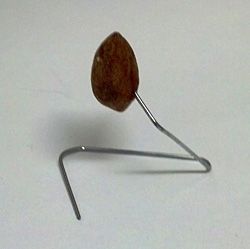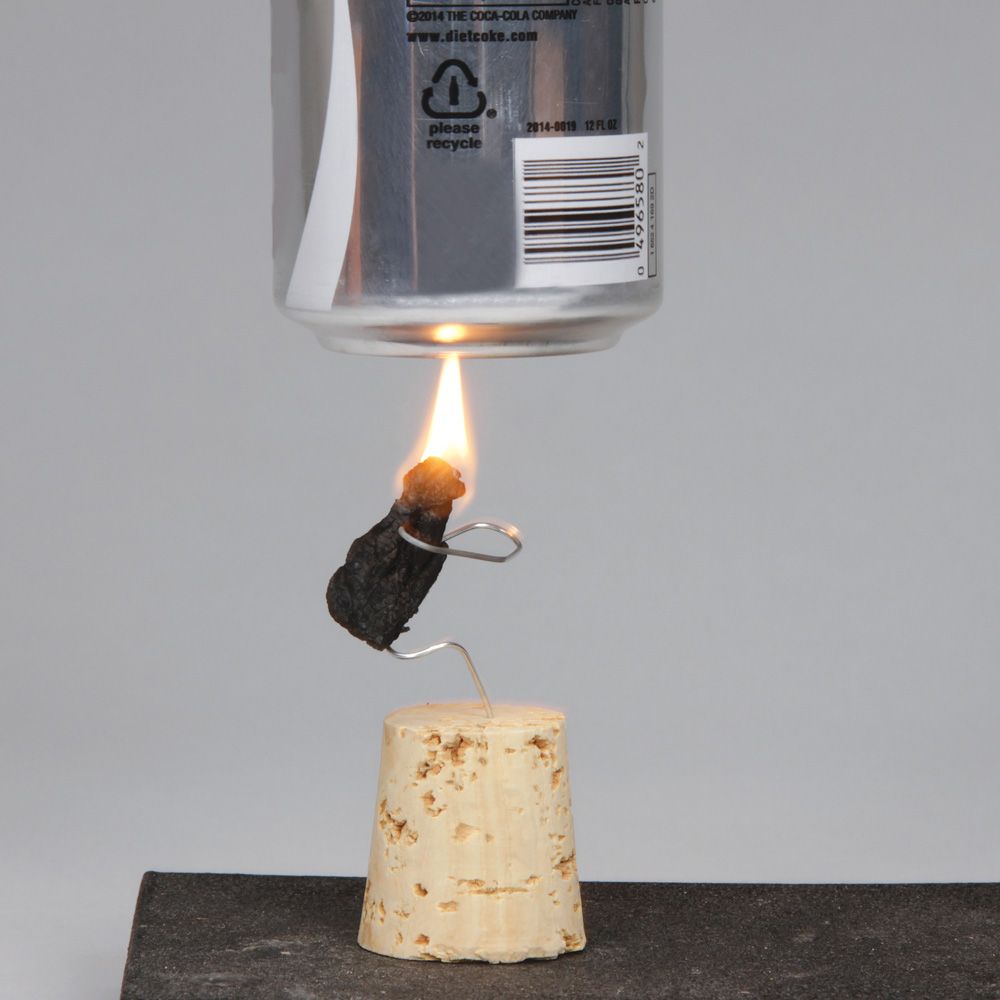What Instrument Is Used to Measure the Energy Content of Foods?ã¢â‚¬â€¹
Food Calorimetry: How to Measure Calories in Food
 Laura Jennings
Laura Jennings
Product Programmer
People who check nutrition labels to brand informed decisions about which foods to eat and which to avert often base those decisions solely on the number of calories per serving. A calorie, like a joule, is a unit of free energy. The International System of Units (SI) unit for free energy is the joule; however, the calorie is unremarkably used for a unit of food energy. A calorie is equal to the amount of free energy per unit mass required to enhance the temperature of 1 k of h2o by i° C. One calorie is the equivalent of iv.18 joules. Food calories, every bit read off a nutrition label, are actually kilocalories (often denoted equally "Calories" with a capital letter C). In that location are 1,000 calories in a kilocalorie, or nutrient Calorie.
A calorimeter is a piece of equipment designed to measure out the energy released or captivated during a chemical reaction or phase alter. Food calorimetry allows us to determine the number of calories per gram of food. In this action, a piece of food is burned and the released energy is used to heat a known quantity of water. The temperature alter (∆T) of the h2o is then used to make up one's mind the corporeality of energy in the food.
Safety measures
Use safety glasses or goggles and be cautious with the matches and called-for food samples. Check for food allergies earlier using food samples. Sensitive individuals should non participate in whatever activities that may result in exposure. Never eat or drink in lab.
Materials
For each group
- Soda Can (empty)
- Stirring Rod
- Ring Stand and Band
- Thermometer
- Graduated Cylinder, 100 mL
- Large Paper Clip
- 2 Twist Ties
- 3 Food Samples with Diet Labels (two to 3 g each of samples such as nuts; marshmallows; or soft chips, due east.g., cheese puffs)
- Water
- Matches
- Aluminum Foil (small piece)
At least 1 of the post-obit to be shared
- Electronic Balance
Procedure
- Using the graduated cylinder, obtain l mL of water and carefully pour it into the soda tin.
- Decide the mass of h2o and record your finding in the data table (hint: density of water = ane g/mL).
- Agree the paper clip horizontally and bend the outer end up until it is at a 90° bending to the residue of the paper prune.
- Obtain a 2- to 3-g nutrient sample.
- Place the food sample on the newspaper clip's upward-extending cease. The sample should be freestanding, supported by the bottom of the paper clip (see Fig. i). Determine the initial mass of the food sample and paper clip, and record your findings in the data table.

Effigy one
- Place a small slice of aluminum foil underneath the newspaper prune in a space that has been cleared of all flammables.
- Insert the stirring rod through the soda tin can tab and position the tin in the ring stand up so the stirring rod supports it (see Fig. 2).

Figure 2
- Adjust the ring stand until the tin is approximately four cm in a higher place the food sample.
- Suspend the thermometer inside the tin a few centimeters in a higher place the can's lesser. Secure with 2 twist ties.
- Decide the initial temperature of the water in the can and record this value in the data table.
- Carefully low-cal a match and use it to light the food sample.
- Allow the lit sample to oestrus the water in the can. Gently stir the water periodically with the thermometer (run across Fig. 3).
- Monitor the temperature change of the water and record the highest observed temperature in the data table.

Figure 3
- In one case the food sample has burned, observe the mass of the remaining food sample and newspaper clip. Record this value in the data table.
- Repeat steps one through 14 for each of the remaining nutrient samples.
Data Table
| Sample #1 | Sample #2 | Sample #3 | |
| Mass of Water | |||
| Initial Mass of Food Sample and Paper Prune | |||
| Initial Water Temperature (°C) | |||
| Terminal Water Temperature (°C) | |||
| Terminal Mass of Nutrient Sample and Paper Clip After Burning |
Calculations for each food sample
- Decide the mass of food that actually burned. (Initial Mass of Food Sample and Newspaper Clip – Final Mass of Nutrient Sample and Paper Clip After Called-for) ___________ g
- Determine the change in temperature of h2o, ∆T. _____________ °C
- Calculate the energy (in calories) released by the burning food sample and captivated by the water.
Q = mCpΔT
Q = estrus absorbed by water, g = mass of water in grams, Cp = 1 cal/g °C, ∆T = change in temperature
Q = ____________ calories
- Make up one's mind the number of kilocalories (food Calories) released by the burning nutrient sample (1 kilocalorie, or Calorie = 1,000 calories).
- Summate the energy content of the nutrient in kilocalories/gram.
- Using information on the nutrition label of the nutrient sample, calculate the kilocalories/gram. (Divide Calories per serving by the number of grams in a serving.)
- Compare your experimentally determined energy content (in kilocalories/gram) to the calculated value from the nutrition label. Summate the percentage error for your experiment.
Extension activities
- Use the nutrition labels to decide the corporeality of fat, protein, and carbohydrates in each food sample. Make up one's mind if there is a connection between these values and the energy content of the tested foods.
- Claiming students to develop a more efficient calorimeter and allow students to test their devices.
- Farther explore calorimetry and thermodynamics with these Carolina products:
- Carolina Investigations® for AP® Chemistry: Principles of Calorimetry Kit
- Nutrient Calorimeter
- Carolina Chemonstrations® for AP® Chemistry: Big Idea 5—Thermodynamics
- Inquiries in Science®: Examining Thermochemistry Kit
*AP® is a trademark registered and/or owned by the College Board®, which was non involved in the production of, and does non endorse, these products.
Source: https://www.carolina.com/teacher-resources/Interactive/food-calorimetry+/tr23949.tr
0 Response to "What Instrument Is Used to Measure the Energy Content of Foods?ã¢â‚¬â€¹"
Publicar un comentario